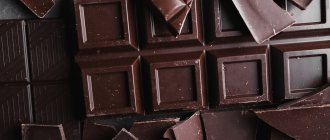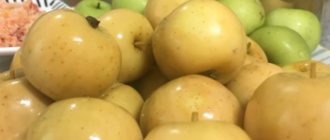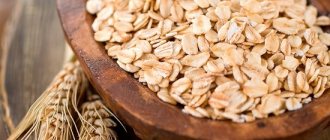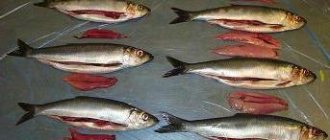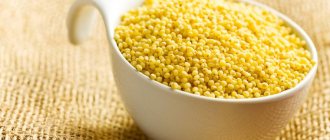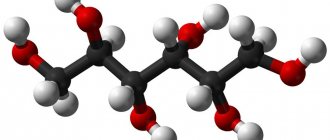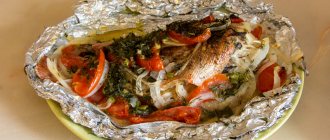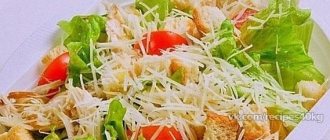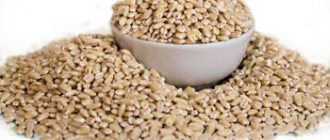This article will discuss the calorie content of pumpkin products.
Pumpkin was highly valued by our grandmothers, since the product was stored for a long time. In addition, such a vegetable had good yield and availability even for poor families in the old days. But now nutritionists are focusing on the high vitamin content of pumpkin, its incredible health benefits and easy digestibility by the body. Plus, pumpkin is low in calories! But each cooking option and addition of other ingredients can affect the calorie count.
Composition and calorie content of millet porridge with pumpkin
When preparing porridge with millet cereals and pumpkin, you can use different ingredients, and thanks to this you can get dishes of different calorie content. But there are two main options for preparing this dish - with milk and butter or with water and vegetable oil.
The nutritional value of 100 grams of porridge with milk will be as follows:
- calories - 172.82 kcal;
- proteins - 3.95 g;
- fats - 9.3 g;
- carbohydrates - 18.9 g.
Did you know? Millet is one of the first cereal crops grown in Ancient Rus'. Traditionally, porridge was prepared from millet, and bread was baked from wheat.
Porridge cooked in water will have fewer calories, and the nutritional value per 100 g is:
- calories - 111.75 kcal;
- proteins - 3.07 g;
- fats - 4.7 g;
- carbohydrates - 14.75 g.
Calorie content of raw, boiled and baked pumpkin: value
Even small children are allowed to eat pumpkin when complementary foods are introduced; it is very useful for diabetics and will diversify your diet menu if you want to lose extra pounds.
And for this we invite you to look at the calorie content of pumpkin in different states per 100 g:
- A raw vegetable, depending on the variety, contains from 3 to 11% sugar, so the calorie content varies from 22 to 26 kcal. The average value is often taken as 24 kcal, which is equivalent to the calorie content of zucchini.
- Pumpkin juice
- Pumpkin nectar
- Boiled pumpkin with salt has only 20 kcal
- If you remove salt, the number of calories becomes even lower - 18 kcal
- But boiled pumpkin with sugar already has 56.6 kcal. Provided that only 10 g of sweet product was added
- Baked pumpkin with sugar (10 g) and butter (1 g) has 76.6 kcal
- If you replace sugar with honey when baking, but with butter, the calorie content will be lower - 63 kcal
- Baked pumpkin without oil, but with sugar – 53 kcal
- By baking pumpkin without oil and sugar in the oven, you will get the same low-calorie product - 25.5 kcal
- Stewed pumpkin without sugar – 25 kcal
- With sugar – 40.7 kcal
- Roasted pumpkin – 76 kcal
- Steamed pumpkin – 24 kcal
- Pumpkin flour – 305 kcal
- Pumpkin oil – 895 kcal
Important: Pumpkin seeds still belong to the group of high-calorie foods - 556 kcal per 100 g!
Compound
What are the benefits for the human body?
Millet porridge itself has a beneficial effect on the intestines, vision and “helps” the epidermis to recover faster. But how much benefit it can bring to the body, prepared with the addition of pumpkin! This fruit contains a large amount of useful substances and minerals in its pulp.
The most basic vitamins contained in the pulp of this plant:
- A (retinol);
- C (ascorbic acid);
- E (alpha tocopherol);
- B (thiamine);
- K2 (menaquinone 7).
- There are a number of diseases for which doctors recommend eating porridge with pumpkin:
- increased acidity of gastric juice;
- atherosclerosis;
- anemia;
- immunodeficiency;
- problems in the functioning of the cardiovascular system;
- gout.
In addition, psychotherapists believe that people who eat millet porridge with pumpkin strengthen the nervous system, and those who are overexcited or, conversely, depressed, get rid of painful conditions by including this dish in their diet.
Important! Millet porridge made from whole grains is most beneficial for the body. Its crushed version cooks faster, but a number of beneficial properties are lost due to the destroyed seed shell.
When losing weight
- For people struggling with excess weight, pumpkin will help burn excess fat deposits and remove toxins from the body. In addition, porridge based on millet and pumpkin:
- It will improve the absorption of the intestinal tract and help the body feel full faster.
- Will bring metabolism to an optimal state.
- Will provide the body with a large amount of valuable nutrients and plant fibers.
- It is easy to digest, even if you eat it for dinner.
For the pancreas
This dish is recommended for inclusion in the diet of patients with pancreatitis. The components of the porridge do not harm the body in case of inflammation of the pancreas. However, doctors do not recommend using this product during the acute course of the disease.
Did you know? Under Peter I, a grain was brought into the country, which everyone called
"
Saracen millet
".
In fact, it was ordinary rice.
And when stable remission occurs, you should not neglect this dish, consuming it in small portions. But it should be noted that in a raw or undercooked state, pumpkin and millet may not be beneficial for people with similar problems, so you should be careful when preparing this dish.
For diabetes
- For patients with elevated blood sugar levels, the millet-pumpkin product will help:
- lower glucose levels;
- stabilize blood pressure;
- strengthen the heart muscle;
- normalize water-salt balance.
All of the above problems occur with diabetes. Therefore, a dietary dish is included in the menu of a strict diet for patients with “sugar” disease.
For constipation
Pumpkin will help cope with a delicate problem. It contains a large amount of plant fiber and dietary fiber, which stimulate the gastrointestinal tract and remove toxic substances from it. Well-cooked porridge with pumpkin and milk will easily help solve the problem of sluggish intestines.
Find out also whether or not you can eat buckwheat for constipation.
Benefits and harms
The benefit of pumpkin porridge lies in the fact that it contains the necessary substances - phosphorus, sodium, magnesium. Calcium and potassium, which are part of the product, are needed by the human body, both young and mature, they improve the condition of bones and teeth.
The vitamin content is as follows:
- K, extremely rare and useful;
- ;
- AT 12;
- AT 2;
- IN 1;
- WITH;
- A.
The benefits of porridge with pumpkin are invaluable, because the vegetable contains vitamin K, which affects the functioning of the intestines and stomach, and in the absence of it, possible nosebleeds and bleeding gums, which can lead to serious problems in the future.
Pectins, water-soluble dietary fiber, are found in the pulp, stimulate the intestinal tract, remove radionuclides, and help ulcers heal.
The benefits of pumpkin porridge have a beneficial effect on the body, because the components remove “unhealthy” cholesterol and normalize the exchange of salt and fluid. Pumpkin does not cause any harm, so the product can be consumed both raw and processed. There were also some exceptions to the rules. While adding fresh pumpkin pulp to your diet, you must not forget about the harm it brings to people with stomach problems.
The content of useful components in raw fruits and vegetables is higher than in those that have been cooked.
Types of diseases in which pumpkin porridge does not cause harm, but is beneficial:
- Swelling;
- Atherosclerosis;
- Anemia;
- Exhaustion.
The iron contained in the vegetable helps fight even severe forms of disease, including multiple heart and vascular diseases.
How to use it correctly
First of all, it is worth remembering that this dish is best eaten in the morning. This breakfast will charge your body with energy for the whole day. Whether to add milk during cooking or use plain water depends on taste preferences, as well as on whether the person is on a strict diet or has simply decided to eat healthy. But it is worth noting that skim milk can also be used, and the taste of the dish will improve several times.
The vegetable is prepared in advance - washed, peeled and baked. It is worth paying attention to the cooking technology - the pulp must be well heat-treated. The dish should be consumed warm. Too hot porridge will have a bad effect on the esophagus, and cold porridge will lose its taste.
Cooking recipes
Millet porridge with pumpkin can be cooked in milk or water. This is the only difference in the preparation of the cereal dish. All additional ingredients - raisins, dried apricots or vanilla - depend on the taste preferences of the cook.
Pay attention to the information about the benefits of eating millet porridge during pregnancy.
With milk
Preparing millet porridge with pumpkin in milk should also begin with preparing the vegetable crop. A small fruit must be peeled, removing seeds and peel, and cut into portions. If the vegetable is large, then it can be divided into 2-3 servings. Then the pulp should be baked in the oven at a temperature of +100°C for about 20 minutes.
Next, you can start preparing the main dish. Pour 1 liter of milk into a container and boil it. Then add pumpkin, 150 g of washed millet and 50 g of butter to the pan. After boiling again, you can add salt and sweeten the dish to taste. After 15 minutes, the container must be removed from the stove and placed in a warm place for half an hour. The porridge should brew, after which it must be mixed and can be consumed.
On the water
The algorithm for preparing a cereal dish with water is practically no different from that with a dairy product. The only difference is lower calorie content.
Check out this rosemary pumpkin recipe for your Christmas table too.
Cooking steps:
- Wash and peel the pumpkin.
- Boil 1 liter of water, add chopped vegetables to the boiling water, cook for 10 minutes.
- Add 150 g of washed millet and 30 ml of vegetable oil.
- Cook for another 10 minutes, add 30 g of sugar (optional), a pinch of salt. After 3 minutes, remove the pan from the stove and place in a warm oven for 15–20 minutes.
- Stir before use.
Recipes
Lenten version of porridge with millet
- Millet - one glass;
- Water – 2.5 glasses;
- Pumpkin - half a kilo;
- Salt – 7 gr.;
- Sugar – 35 gr.;
- Butter if the person is not fasting and is not vegan.
Rinse the millet to get rid of bitterness, use only hot water. Light the oven so that it has time to warm up for further use. Peel the vegetable, remove the seeds, cut into small pieces, and grind in a blender. Place the pumpkin in a container, add millet, sugar, salt and add water. Place in the oven for an hour at 180 degrees.
Classic recipe for pumpkin porridge with rice
Calculation for 12 servings:
- Pumpkin – 1 kg;
- Milk – 5 glasses;
- Butter – 50 gr.;
- Rice - a glass with a slide;
- Granulated sugar – 1 tbsp. l.
Peel the vegetable, remove the seeds, grate. Pour milk into a saucepan, put on gas, add pumpkin, simmer over low heat for 8-9 minutes. Rinse the cereal and add it to the pan along with the sugar. Cook the porridge until done. If desired, add butter at the end of cooking.
Pumpkin porridge for children
Children prefer porridge with milk rather than water, and if you add spices to it, then the dish will become a “dream for a sweet tooth.”
- 800 grams of pumpkin pulp;
- 100 grams of wheat cereal;
- 500 ml. milk;
- Raisins to taste;
- Vanilla on the tip of a knife;
- Half tsp. cinnamon;
- Granulated sugar to taste.
Rinse the cereal, add water, wait until it boils. Drain the liquid, add new water to a height of 4 cm, cook until cooked. Pour boiling water over the pumpkin and cook until it becomes soft. Drain the liquid, mash into puree, combine with cereal. Pour milk, add remaining ingredients. Cook the dish for 5 minutes, garnish with fruits or berries.
THESE ARTICLES WILL HELP YOU LOSE WEIGHT
At what age can children be given millet porridge with pumpkin?
This dish is recommended for consumption by children starting from the age of one and a half years. Introducing millet porridge with pumpkin into the diet will help your child acquire strong immunity thanks to the vitamin A it contains.
- In addition, pumpkin-millet product:
- ensures proper development of the body;
- improves appetite and digestion;
- speeds up metabolism;
- gives a large amount of energy.
In addition to an allergic reaction, a child may have an individual intolerance to millet cereals or pumpkin, so this dish should be treated to the baby very carefully the first few times.
Losing weight with pumpkin is easy!
“How many calories are in pumpkin?” - this question interests those representatives of the fair sex who are accustomed to calculating the energy value of dishes. The calorie content of pumpkin is very low, 3 times less than the calorie content of potatoes, so it is recommended for consumption in cases of metabolic disorders, a tendency to be overweight, and as a means to get rid of extra pounds. Depending on the cooking method, calories per 100 grams of product may vary. The pulp contains about 1% protein, 0.1% fat and 4-5% carbohydrates by weight.
Contraindications
The main components of this dish rarely cause an unhealthy reaction in the body, but in isolated cases such problems may well occur. Therefore, people with a predisposition to an allergy to vitamin A should consume porridge with orange vegetables with caution. There are a number of ailments for which this product is prohibited.
- It is not recommended to eat millet porridge with pumpkin:
- people with liver and kidney pathologies;
- nursing women;
- children under 1.5 years old;
- with cholecystitis.
A dish consisting of cereals and vegetables is considered one of the best options for a complete breakfast. With the exception of a small percentage of people, it can be eaten by everyone and for almost any diagnosis. The main thing is to pay close attention to the cooking process and the standards for porridge consumption.
Recipe for pumpkin porridge with milk. Calorie, chemical composition and nutritional value.
Nutritional value and chemical composition of “pumpkin porridge with milk”.
The table shows the nutritional content (calories, proteins, fats, carbohydrates, vitamins and minerals) per 100 grams of edible portion.
| Nutrient | Quantity | Norm** | % of the norm in 100 g | % of the norm in 100 kcal | 100% normal |
| Calorie content | 48.8 kcal | 1684 kcal | 2.9% | 5.9% | 3451 g |
| Squirrels | 1.5 g | 76 g | 2% | 4.1% | 5067 g |
| Fats | 0.8 g | 56 g | 1.4% | 2.9% | 7000 g |
| Carbohydrates | 8.9 g | 219 g | 4.1% | 8.4% | 2461 g |
| Alimentary fiber | 1.5 g | 20 g | 7.5% | 15.4% | 1333 g |
| Water | 86.6 g | 2273 g | 3.8% | 7.8% | 2625 g |
| Ash | 0.65 g | ~ | |||
| Vitamins | |||||
| Vitamin A, RE | 35 mcg | 900 mcg | 3.9% | 8% | 2571 g |
| Retinol | 0.004 mg | ~ | |||
| beta carotene | 0.19 mg | 5 mg | 3.8% | 7.8% | 2632 g |
| Vitamin B1, thiamine | 0.054 mg | 1.5 mg | 3.6% | 7.4% | 2778 g |
| Vitamin B2, riboflavin | 0.036 mg | 1.8 mg | 2% | 4.1% | 5000 g |
| Vitamin B4, choline | 13.57 mg | 500 mg | 2.7% | 5.5% | 3685 g |
| Vitamin B5, pantothenic | 0.173 mg | 5 mg | 3.5% | 7.2% | 2890 g |
| Vitamin B6, pyridoxine | 0.09 mg | 2 mg | 4.5% | 9.2% | 2222 g |
| Vitamin B9, folates | 6.75 mcg | 400 mcg | 1.7% | 3.5% | 5926 g |
| Vitamin B12, cobalamin | 0.05 mcg | 3 mcg | 1.7% | 3.5% | 6000 g |
| Vitamin C, ascorbic acid | 1.19 mg | 90 mg | 1.3% | 2.7% | 7563 g |
| Vitamin D, calciferol | 0.006 mcg | 10 mcg | 0.1% | 0.2% | 166667 g |
| Vitamin E, alpha tocopherol, TE | 0.161 mg | 15 mg | 1.1% | 2.3% | 9317 g |
| Vitamin H, biotin | 1.9 mcg | 50 mcg | 3.8% | 7.8% | 2632 g |
| Vitamin RR, NE | 0.9037 mg | 20 mg | 4.5% | 9.2% | 2213 g |
| Niacin | 0.55 mg | ~ | |||
| Macronutrients | |||||
| Potassium, K | 83 mg | 2500 mg | 3.3% | 6.8% | 3012 g |
| Calcium, Ca | 25.94 mg | 1000 mg | 2.6% | 5.3% | 3855 g |
| Silicon, Si | 155 mg | 30 mg | 516.7% | 1058.8% | 19 g |
| Magnesium, Mg | 18.63 mg | 400 mg | 4.7% | 9.6% | 2147 g |
| Sodium, Na | 11.06 mg | 1300 mg | 0.9% | 1.8% | 11754 g |
| Sera, S | 14 mg | 1000 mg | 1.4% | 2.9% | 7143 g |
| Phosphorus, P | 55.4 mg | 800 mg | 6.9% | 14.1% | 1444 g |
| Chlorine, Cl | 33.63 mg | 2300 mg | 1.5% | 3.1% | 6839 g |
| Microelements | |||||
| Aluminium, Al | 120.2 mcg | ~ | |||
| Bor, B | 28 mcg | ~ | |||
| Vanadium, V | 50 mcg | ~ | |||
| Iron, Fe | 0.322 mg | 18 mg | 1.8% | 3.7% | 5590 g |
| Yod, I | 1.54 mcg | 150 mcg | 1% | 2% | 9740 g |
| Cobalt, Co | 1.088 mcg | 10 mcg | 10.9% | 22.3% | 919 g |
| Manganese, Mn | 0.4605 mg | 2 mg | 23% | 47.1% | 434 g |
| Copper, Cu | 94.38 mcg | 1000 mcg | 9.4% | 19.3% | 1060 g |
| Molybdenum, Mo | 3.963 mcg | 70 mcg | 5.7% | 11.7% | 1766 |
| Nickel, Ni | 6.45 mcg | ~ | |||
| Tin, Sn | 1.63 mcg | ~ | |||
| Selenium, Se | 2.75 mcg | 55 mcg | 5% | 10.2% | 2000 g |
| Strontium, Sr | 2.13 mcg | ~ | |||
| Fluorine, F | 85.75 mcg | 4000 mcg | 2.1% | 4.3% | 4665 g |
| Chromium, Cr | 0.6 mcg | 50 mcg | 1.2% | 2.5% | 8333 g |
| Zinc, Zn | 0.305 mg | 12 mg | 2.5% | 5.1% | 3934 g |
| Digestible carbohydrates | |||||
| Starch and dextrins | 7.7 g | ~ | |||
| Mono- and disaccharides (sugars) | 0.6 g | max 100 g | |||
| Galactose | 0.012 g | ~ | |||
| Glucose (dextrose) | 0.3275 g | ~ | |||
| Lactose | 0.6 g | ~ | |||
| Maltose | 0.025 g | ~ | |||
| Sucrose | 0.12 g | ~ | |||
| Fructose | 0.1125 g | ~ | |||
| Essential amino acids | 0.1731 g | ~ | |||
| Arginine* | 0.0903 g | ~ | |||
| Valin | 0.0739 g | ~ | |||
| Histidine* | 0.035 g | ~ | |||
| Isoleucine | 0.0586 g | ~ | |||
| Leucine | 0.1216 g | ~ | |||
| Lysine | 0.0689 g | ~ | |||
| Methionine | 0.0291 g | ~ | |||
| Methionine + Cysteine | 0.0363 g | ~ | |||
| Threonine | 0.0516 g | ~ | |||
| Tryptophan | 0.0175 g | ~ | |||
| Phenylalanine | 0.0731 g | ~ | |||
| Phenylalanine+Tyrosine | 0.0875 g | ~ | |||
| Nonessential amino acids | 0.2199 g | ~ | |||
| Alanin | 0.061 g | ~ | |||
| Aspartic acid | 0.1074 g | ~ | |||
| Glycine | 0.0496 g | ~ | |||
| Glutamic acid | 0.2236 g | ~ | |||
| Proline | 0.0798 g | ~ | |||
| Serin | 0.0633 g | ~ | |||
| Tyrosine | 0.0592 g | ~ | |||
| Cysteine | 0.0208 g | ~ | |||
| Sterols (sterols) | |||||
| Cholesterol | 1.25 mg | max 300 mg | |||
| beta sitosterol | 6.25 mg | ~ | |||
| Saturated fatty acids | |||||
| Saturated fatty acids | 0.1 g | max 18.7 g | |||
| 4:0 Oil | 0.0138 g | ~ | |||
| 6:0 Kapronovaya | 0.01 g | ~ | |||
| 8:0 Caprylic | 0.005 g | ~ | |||
| 10:0 Kaprinovaya | 0.0113 g | ~ | |||
| 12:0 Lauric | 0.0125 g | ~ | |||
| 14:0 Miristinovaya | 0.065 g | ~ | |||
| 16:0 Palmitinaya | 0.1237 g | ~ | |||
| 17:0 Margarine | 0.0025 g | ~ | |||
| 18:0 Stearic | 0.0487 g | ~ | |||
| 20:0 Arakhinovaya | 0.0063 g | ~ | |||
| Monounsaturated fatty acids | 0.1213 g | min 16.8 g | 0.7% | 1.4% | |
| 14:1 Myristoleic | 0.0063 g | ~ | |||
| 16:1 Palmitoleic | 0.0125 g | ~ | |||
| 18:1 Oleic (omega-9) | 0.2163 g | ~ | |||
| Polyunsaturated fatty acids | 0.1163 g | from 11.2 to 20.6 g | 1% | 2% | |
| 18:2 Linolevaya | 0.1225 g | ~ | |||
| 18:3 Linolenic | 0.0088 g | ~ | |||
| 20:4 Arachidonic | 0.0113 g | ~ | |||
| Omega-6 fatty acids | 0.1 g | from 4.7 to 16.8 g | 2.1% | 4.3% |
The energy value of pumpkin porridge with milk is 48.8 kcal.
Primary Source: Created in the application by the user. Read more.
** This table shows the average levels of vitamins and minerals for an adult. If you want to know the norms taking into account your gender, age and other factors, then use the “My Healthy Diet” application.
